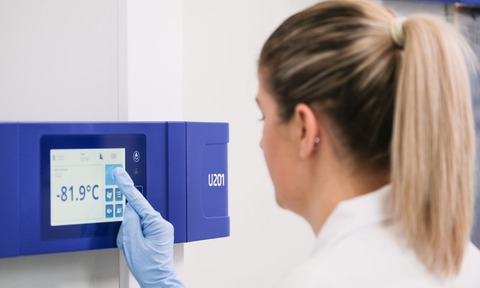
In the lab, the need for effective temperature control is a given. And as demands have increased, so has the precision offered by technology such as wireless data loggers, says Jason Webb.
Many of the breakthroughs in science, healthcare and pharmaceutical research are dependent on the precise control and monitoring of a laboratory’s temperature and humidity.
The usual temperature range maintained in UK laboratories falls within 18°C to 24°C, with the optimal temperature typically falling between 20-22°C. Additionally, a humidity level of 45% to 65% is recommended. These specified parameters are established to adhere to Health and Safety Executive regulations and create an environment for the effective conduct of experiments.
Maintaining these optimum conditions can be challenging. However, solutions to address these challenges with modern innovation and technologies are becoming more effective and accessible. For example, wireless data loggers are playing an essential role in ensuring accurate readings and data logging to help combat these challenges.
Chemicals exposed to inappropriate temperatures may undergo instability or lose their effectiveness, resulting in inaccuracies during experiments or potential failure of the entire experiment. Improper storage conditions for samples may also cause damage or render them unusable.
Navigating challenges
Managing temperature levels, where any kind of fluctuation can have serious ramifications to experiments or research facilities, is crucial when it comes to the completion of sensitive work. Laboratories are centres of innovation. There is a real need for accuracy.
Maintaining precise temperature conditions, with slim boundaries or room for fluctuation, requires advanced solutions through temperature measurement and monitoring equipment technology. Through the implementation of tools such as thermostats, sensors and wireless data loggers, timesaving efficiencies are improved and potential unnecessary spend from spoiled work are reduced or ultimately eliminated.
Data delivery
Laboratories and research centres require data that can reliably action, analyse and adjust temperature levels. Wireless data loggers allow for all three of these actions to be undertaken from what can often be an overlooked piece of technology. With a constant stream of information coming from the logger, transmitted wirelessly via wi-fi, this allows for live, real-time readings from anywhere and at any time.
Maintaining precise temperature conditions, with slim boundaries or room for fluctuation, requires advanced solutions
The ability to be notified and to monitor any form of fluctuation or deviation from the required temperature conditions can potentially save any sensitive work and research. Being empowered to be proactive and reactive in your control of temperatures puts the information and ability in the hands of the user, keeping everyone informed at all times. Equally, the ease of accessing historic data empowers the users to analyse the data and be proactive about addressing periods of fluctuation or past issues that may have presented themselves.
Confidence at a distance
Another benefit of implementing wireless data loggers is that even when the facility is closed, or without people actively inside the laboratory, the ability to still be just as informed and in control is possible. Even throughout long periods of unmonitored time such as weekends or holiday breaks, a careful eye can be kept on the temperature control. This adds a whole new level of integrity and confidence into the process and continues to reduce any room for error.
Many laboratories and research facilities deal in temperature sensitive environments, be it the physical items themselves or the need for consistent and stable conditions. Perishable goods or pharmaceutical research are all heavily reliant on temperature control. With wireless data loggers, should there be any temperature deviation, people on-site or designated people can be notified so that the situation can be dealt with swiftly.
Elemental protection
In the hotter months of the year, the risk of medical and pharmaceutical research comes under specific risk due to the need to maintain a cool and consistent temperature. Most medicines must be stored below 25°C but during developmental and research stages, this could be much lower and cooler. Reflecting back on the pandemic for a moment, where a spotlight was shone on vaccine research and development, equipment such as data loggers were a critical cog in that machine. High-risk environments for the work that was happening during that period had to be consistently monitored so as not to cause catastrophic setbacks or loss of vaccines.
Still to this day, the World Health Organisation estimates that over 50% of vaccines worldwide are lost or wasted every single year.
Many of these are unfortunately lost due to inefficient delivery and improper storage. Wireless data loggers, often the hidden heroes, offer a level of preventative control and confidence.
Having full awareness and control over temperature conditions is a vital component to ensuring that the important work conducted in laboratories and research facilities can be carried out with confidence and minimal risk.
From the ongoing vital work in the world of pharmaceutical development and vaccine research, all the way through to advertisements in scientific discoveries, wireless data loggers are a vital piece of equipment in that process.
Jason Webb is managing director of Electronic Temperature Instruments (ETI)

